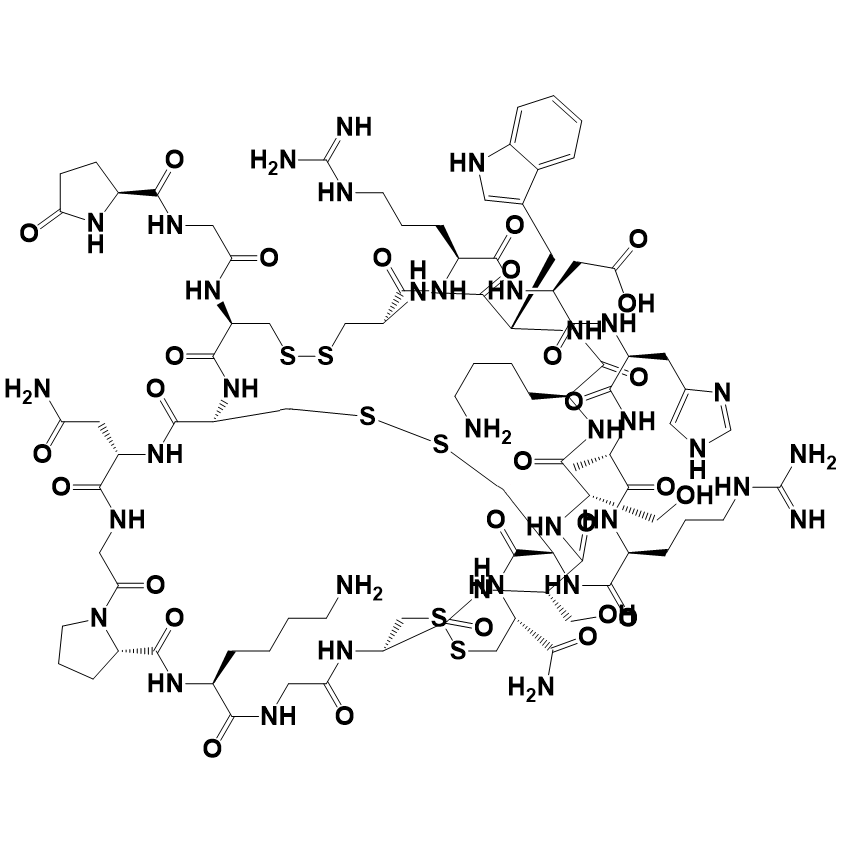Product Name: μ-Conotoxin
Synonyms: μ-Conotoxin;XEP-018;CONOTOXIN;ACETY TETRAPEPTIDE-9;Cono Antiwrinkle;L-Cysteinamide, 5-oxo-L-prolylglycyl-L-cysteinyl-L-cysteinyl-L-asparaginylglycyl-L-prolyl-L-lysylglycyl-L-cysteinyl-L-seryl-L-seryl-L-lysyl-L-tryptophyl-L-cysteinyl-L-arginyl-L-α-aspartyl-L-histidyl-L-alanyl-L-arginyl-L-cysteinyl-, cyclic (3→15),(4→21),(10→22)-tris(disulfide);Conotoxin/Conopeptide/CTX;mu-conotoxin USP/EP/BP
CAS: 936616-33-0
MF: C92H139N35O28S6
MW: 2375.7
EINECS: 606-757-9
Efficacy: The effectiveness of μ-Conotoxin is derived from its ability to selectively interact with and inhibit specific types of voltage-gated sodium channels. This selectivity is crucial as it allows researchers to investigate the role and function of these channels with minimal interference from other cellular activities.
Mechanism of Action: μ-Conotoxin works through a series of key steps:
Binding to sodium channels: The peptide binds selectively to certain types of voltage-gated sodium channels on neuronal cells.
Blocking ion flow: Upon binding, μ-Conotoxin inhibits the flow of sodium ions through the channels, thus disrupting the electrochemical gradient in these cells.
Effect on neuronal activity: As sodium ions play a vital role in cell signalling, their blocking leads to alterations in the electrical activity of the neurons.

